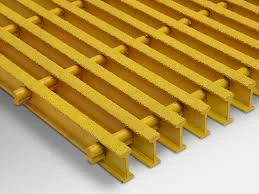loading...
- No. 9, Xingyuan South Street, Dongwaihuan Road, Zaoqiang County, Hengshui, Hebei, China
- admin@zjcomposites.com
- +86 15097380338
- Welcome to visit our website!
reverse osmosis membrane housing
Understanding Reverse Osmosis Membrane Housing An Essential Component for Water Purification
In the quest for clean and safe drinking water, reverse osmosis (RO) systems have emerged as one of the most effective technologies available. Central to these systems is the reverse osmosis membrane housing, a crucial component that plays a significant role in the water purification process. This article aims to explore the importance, functionality, and considerations associated with reverse osmosis membrane housing.
What is Reverse Osmosis?
Reverse osmosis is a water purification process that uses a semi-permeable membrane to remove impurities from water. This technology is widely used in various applications, including residential water filtration, industrial processes, and desalination. The process works by applying pressure to water, which forces it through the membrane, allowing only water molecules to pass while rejecting contaminants like salts, bacteria, and other dissolved solids.
The Role of Membrane Housing
The membrane housing is essentially the protective structure that encases the reverse osmosis membrane. It serves several vital functions
1. Protection The housing safeguards the delicate membrane from physical damage and external contaminants. Given the membrane's sensitivity, any breach could lead to a significant reduction in filtration efficiency or complete system failure.
2. Pressure Regulation RO systems operate under high pressure, and the membrane housing is designed to withstand these pressures. Its robust construction ensures that the system maintains the necessary pressure during operation to achieve optimal filtration performance.
3. Flow Management Membrane housings are engineered to facilitate proper water flow, ensuring that the water moves efficiently across the membrane surface. This design increases the contact time between the water and the membrane, enhancing the purification process.
4. Ease of Maintenance Many membrane housings are designed for easy access, allowing for simpler replacement of the membrane when necessary. This feature is crucial for maintaining the efficiency and longevity of the RO system.
Materials Used in Membrane Housing
reverse osmosis membrane housing

The construction materials of reverse osmosis membrane housings are critical to their performance and longevity. Common materials include
- Polypropylene Lightweight and resistant to corrosion, polypropylene is often used for its durability and chemical resistance. It's particularly well-suited for applications involving various water sources.
- Stainless Steel For more demanding applications, stainless steel is utilized due to its exceptional strength and resistance to high pressure and temperature fluctuations. Stainless steel housings are commonly found in industrial systems and high-capacity RO plants.
Choosing the Right Membrane Housing
When selecting a reverse osmosis membrane housing, several factors should be considered
1. Compatibility with Membrane Size Membrane housings come in various sizes and configurations. It is vital to ensure that the housing is compatible with the specific membrane type being used, as this impacts filtration efficiency.
2. Type of Application The intended application—whether residential, commercial, or industrial—will dictate the design and material requirements for the membrane housing. For example, residential systems may prioritize compactness, while industrial systems may require larger, more robust housings.
3. Pressure Rating Always check the pressure rating of the housing to ensure it aligns with the operating conditions of your RO system. Using a housing that cannot withstand the necessary pressure can lead to catastrophic failures.
4. Ease of Maintenance Opting for a design that allows for easy access and maintenance will save time and costs down the line. Consider features like quick-disconnect fittings and integrated valves.
Conclusion
Reverse osmosis membrane housing is a critical component in ensuring the efficiency and effectiveness of water purification systems. By understanding its role, materials, and considerations for selection, consumers and industries can make informed choices that lead to better water quality and system longevity. As water scarcity and quality issues continue to be significant global challenges, investing in high-quality RO systems, including robust membrane housings, can help secure clean, safe drinking water for all.
-
The Rise of FRP Profiles: Strong, Lightweight, and Built to LastNewsJul.14,2025
-
SMC Panel Tanks: A Modern Water Storage Solution for All EnvironmentsNewsJul.14,2025
-
GRP Grating: A Modern Solution for Safe and Durable Access SystemsNewsJul.14,2025
-
Galvanized Steel Water Tanks: Durable, Reliable, and Ready for UseNewsJul.14,2025
-
FRP Mini Mesh Grating: The Safer, Smarter Flooring SolutionNewsJul.14,2025
-
Exploring FRP Vessels: Durable Solutions for Modern Fluid HandlingNewsJul.14,2025
-
GRP Structures: The Future of Lightweight, High-Performance EngineeringNewsJun.20,2025
